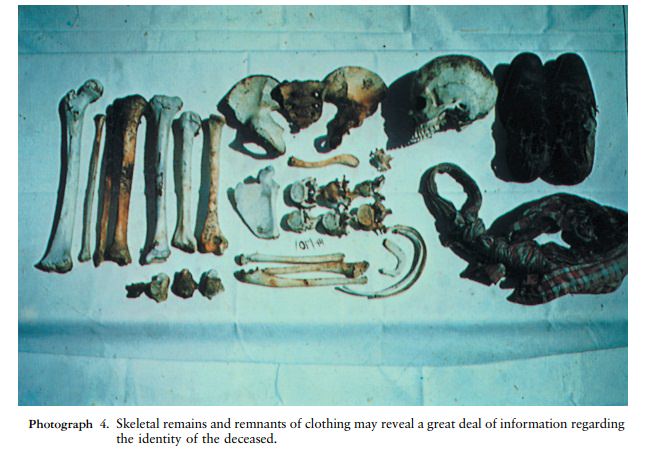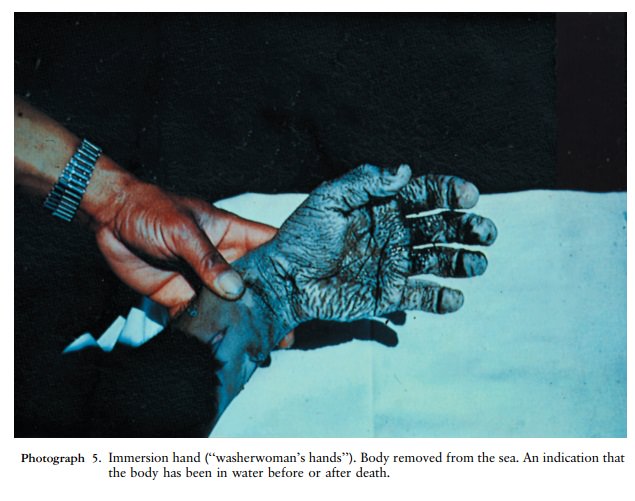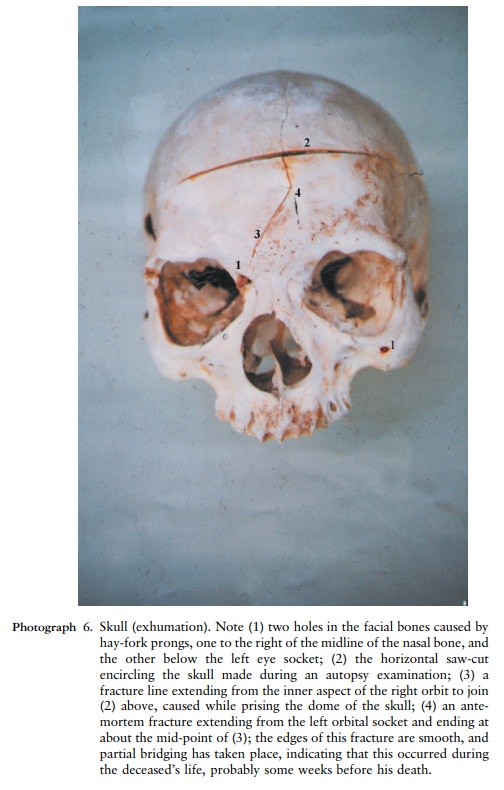Chapter: Forensic Medicine: Identification
Forensic Medicine: Identification
Identification
Introduction
If a person (dead or alive) cannot be identified
correctly, it can have far-reaching implications, and this is not true only for
the legal process. Family members have the need to dispose of the remains of
their loved ones in a suitable fashion and the insurance industry also needs
unequivocal proof of the deceased's identity before a claim can be settled.
Identification is usually not a major issue in
most deaths, although it may be traumatic for the next of kin to see the
mutilated body of a loved one. It has for example happened that under such
emotional circumstances people have been identified incorrectly.
Identification can be difficult in certain
situations:
·
Where bodies are mutilated, especially where the head and limbs are
absent
·
Where bodies are decomposed.
·
If bodies are burnt and charred.
·
If there is only a skeleton, or parts thereof, left (photo 4).
·
In the case of mass disasters where mutilation and charring of bodies
are common, such as on 11 September 2001 in New York, and in aircraft and
mining accidents.

The identification of a living person is also
important. A young individual, age unknown, may be prosecuted for a crime in
which the exact age of the assailant may be an issue of importance, especially
when it comes to an appropriate sentence. It is sometimes also necessary to
link the genetic contents of a specimen, for example semen, with a specific
individual. Identification of the alleged father in cases of a paternity
dispute is a common occurrence.
Identification, both in the living and a dead
person, is done according to one or both of the following two basic principles:
·
Identification through reconstruction and
classification. This
involves determining age, sex, race, height, et cetera. On the grounds of this
information one can place the individual in a group of individuals.
·
Identification through comparative studies. Certain features unique to an individual can be
compared with data available about that individual or possible individuals.
Fingerprints, photographs, scars, operation scars and prostheses, or the
absence of viscera (eg the uterus) can be of value. The impression of a bite
mark on the skin can be compared with the teeth of an alleged assailant. In
charred bodies the teeth are usually preserved, and can be used in the
identification of the deceased.
The use of molecular biology, specifically DNA
analysis, offers unequivocal proof in the identification of a specific
individual. At present this technique is extensively used in paternity testing,
and has replaced blood group analysis.
Fingerprints (also palmprints) are still an
important means to identify an individual, but for this method comparative
prints are needed.
We shall now discuss two situations where
identification is often problematic and difficult, and then we discuss general
principles regarding age, race and sex in skeletal and nonskeletal remains when
it comes to identification.
Mass disasters
In a mass disaster the following issues are at
stake:
·
the number of individuals involved
·
the identity of each individual based on
o
age, sex and race
o
personal identifying marks, such as scars, jewelry, tattoo's, finger-prints
o
forensic odontology or dentistry
o
molecular biology (DNA)
·
the cause of death in each individual
It is of cardinal importance in the case of for
example aircraft accidents to identify the pilot and crew, and to exclude any
possible external factor which could have impacted negatively on their
performance. This includes natural disease processes such as heart diseases, as
well as alcohol intoxication and carbon monoxide poisoning.

Skeletal remains
When examining a skeleton, the following questions
have to be answered:
·
Are the remains bones, and specifically human bones?
·
How many people's bones are involved?
·
How long have the bones been there. Usually skeletal remains of more
than 50 years are regarded as of archeological importance only, and no further
forensic investigations are undertaken.
·
What are the characteristics of each skeleton?
The following is taken into account:
·
age
·
race
·
sex
·
height
·
identifying marks on the skeleton (old fractures, parturition marks on
the inner aspect of the female pelvis) signs of trauma (photographs 6 and 8)


Related Topics